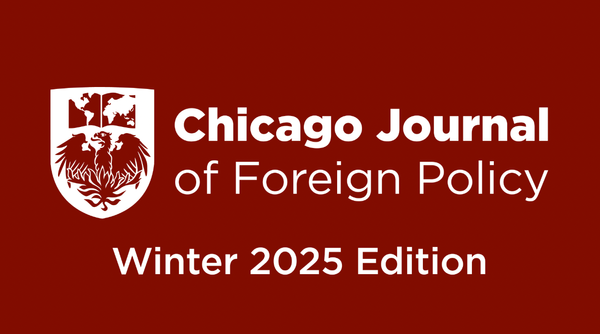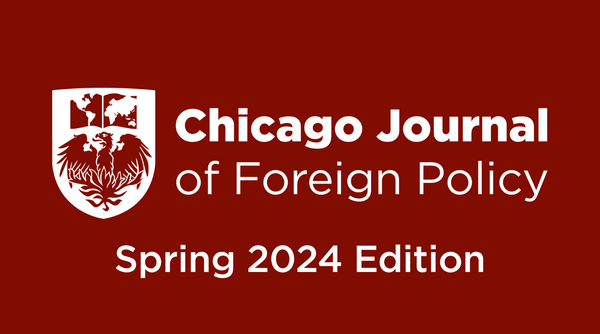An Examination of Narendra Modi’s Relationship with the U.S.

By Vivan Das, University of Chicago
Since his appointment as Prime Minister in 2014, Narendra Modi has starkly redefined India’s political relationship with the United States. U.S. President Joe Biden has characterized the relationship between the two nations as “the most consequential in the world” (BBC). Modi has made it clear that he wants to take a much more direct approach to India’s relations with the U.S., moving away from how the two countries interacted in the past. But how did we get here? And how exactly is he making these shifts? What are the implications of the current relationship between the two countries?
A Brief History of U.S.-India Relations
Upon its independence in 1947, India was thrust into a bipolar international landscape; the ideological, economic, and political divide between the U.S. and USSR dominated global politics. Jawaharlal Nehru, India’s first Prime Minister, elected not to side with India with one of the two but rather to classify India as a member of the Non-Alignment Movement. However, despite this announced neutrality, India maintained closer ties with the USSR. India served as one of the USSR’s biggest trading partners during this time, including in arms sales. It was these weapons that helped India liberate Bangladesh from Pakistan during the Third Indo-Pakistani War in 1971, a period that marked the lowlight of US-Indian relations as Pakistan was armed with American military equipment.
Having lost its largest trading partner when the Soviet Union dissolved, India began to expand its global ties in the 1990s. Although India still operated on principles of Non-Alignment, relations with the U.S. strengthened during this period, and the two nations saw increased investments in one another. Between 2000 and 2003, Prime Minister Vajpayee made four visits to the U.S., encouraging economic engagement. In 2005, President Bush pushed the India–United States Civil Nuclear Agreement, in which India would commit their nuclear facilities to IAEA safeguards in exchange for increased trade and interaction between U.S. and Indian companies to expand India’s nuclear sector (ORF). In 2010, President Obama was the first U.S. president to endorse India receiving a permanent seat on the UN Security Council, reflecting the U.S.'s desire to further strengthen its relationship with India during this period.
A New Era of Indian Foreign Policy
The election of Narendra Modi marked a change in India’s foreign policy. From the start of his first term in office, Modi has looked to redefine the role that India plays on the international stage. Modi’s foreign policy seeks to set India not only as the dominant power in Asia but as an independent power in a multipolar world order. He has worked towards this goal by maximizing India’s relationships with other democracies that also fear the rising power of China. Modi has increased engagement with other members of the Quad – Japan and Australia – in hopes of combating China’s influence in the Indo-Pacific region. Furthermore, as part of Modi’s Act East Policy, he has strengthened relations with countries from Southeast Asia, such as Vietnam, Singapore, and Indonesia. This policy includes closer economic, strategic, and cultural ties with these nations, as well as diminishes China’s influence over the region (PIB).
During his time in office, he has made six official visits to the US. In June 2023, Modi and Biden released a joint statement, reiterating the importance of US-India relations. In it, there was mention of increased cooperation between both countries in their defense and technology industries. Specifically, they stated a commitment to “building resilient global semiconductor supply chains,” reflecting both countries’ desire to curtail China’s role in the industry. Biden also reaffirmed his support for India to be added as a permanent member of the UN Security Council, further showing the shift towards a more direct relationship between the two countries.
Although Modi has developed closer ties with Western and democratic countries, Modi still operates off of the principles of Non-Alignment. However, Modi’s version of Non-Alignment has evolved from a simple stance of neutrality between two competing ideologies into a foreign policy that prioritizes Indian interests above all else, regardless of its relationships with other partners. Modi has maintained close ties with Russia – a country that stands in direct opposition to the aforementioned allies of India. India continues to do business with Russia, with Russian oil making up 20% of India’s crude oil imports and Russia supplying 45% of India’s arms (PBS)(BBC). In exchange, India has sided with Russia on many international issues– India has yet to vote against Russia’s war in Ukraine (PBS).
A Convenient Ignorance
The US has seen the relationship with India as an important one since Modi was elected. Both India and the U.S. have an interest in containing the spread of Chinese power and influence within the Pacific region, and Modi has shown a clear commitment to working with the U.S. to deal with the matter. However, the supposed importance of this relationship has caused U.S. leaders to overlook the controversial sides of Modi’s government. Modi and his political party, the BJP, have been responsible for a rise in Hindu nationalism, making Muslims, Sikhs, and members of other religions fearful for their safety and future within India. The European Parliament adopted a resolution criticizing the increase in nationalist rhetoric in India. However, the White House has yet to ever make a statement on the matter. Furthermore, Modi’s regime has been accused multiple times of corruption. Most recently, Prime Minister Trudeau of Canada accused Modi of being linked to the murder of a Canadian Sikh politician. While the U.S. asked that India cooperate with Canada, the White House did little else to assist Canada during this investigation.
Elections are upcoming in India this year, and to many the sentiment is that Modi’s victory is all but guaranteed. Since it is reasonable to expect another term of Modi, the White House will have to soon re-evaluate how it treats its relationship with India. The situation must be handled with care since India will be able to play a large role in the security and stability of the Indo-Pacific region in the coming year and the U.S. will not want to sacrifice this. The U.S. could risk losing its close relationship with India and be left with a situation where the U.S. finds itself with no close allies in a region that is only increasing in power and outreach. The work that Modi has done towards crafting relationships with other Asian countries will prove to be invaluable for the U.S. in the upcoming years; the stability of this region could be challenged with the threat of a Chinese invasion of Taiwan looming on the horizon. Despite this, the U.S. must not take the potential threat of human rights violations towards non-Hindus within India lightly. The White House’s current approach of not commenting on the matter must change, as it only further encourages Modi to continue acting in the way he has. If the White House defines these expectations soon, it will help ensure that India-U.S. relations will be long-lasting, rather than of a temporal nature similar to that between the US and USSR during World War II. Furthermore, the White House should assert that India loosens its ties with the Kremlin to receive full support from the U.S. For India to transition as a close ally of the U.S. it can no longer stay sympathetic with Russia.
How the U.S. handles this situation will be crucial for the future of the U.S.'s foreign policy. Within India lies a great potential for them to become Asia’s next great power. However, attached to that potential are many different burdens, which could easily steer the nation's current relations completely off-track.





